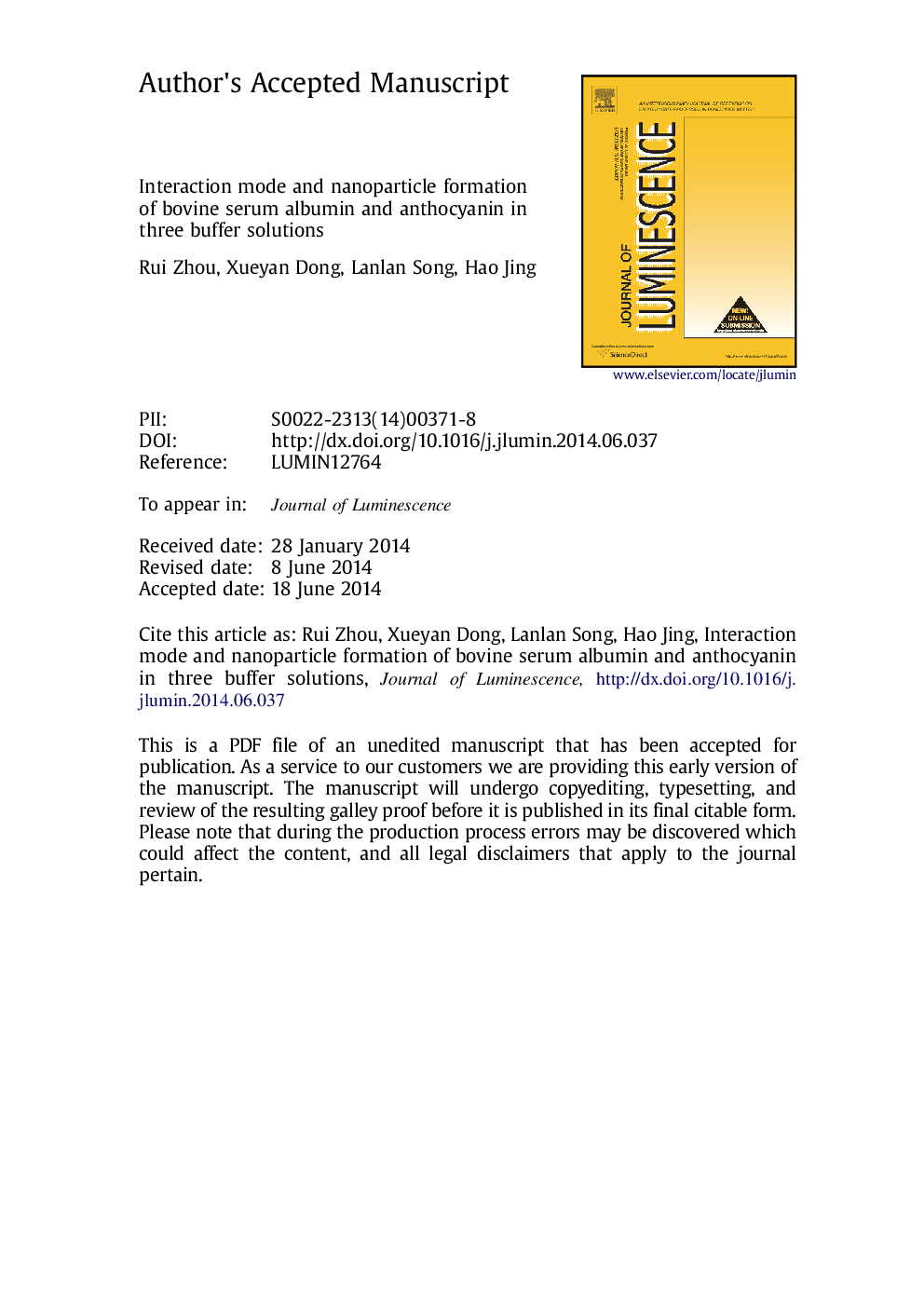| Article ID | Journal | Published Year | Pages | File Type |
|---|---|---|---|---|
| 5399438 | Journal of Luminescence | 2014 | 26 Pages |
Abstract
Investigation of interaction mode of bovine serum albumin (BSA) and anthocyanin (ACN) in different solutions will help us understand the interaction mechanism and functional change of bioactive small molecule and biomacromolecule. This study investigated the binding mode, including binding constant, number of binding sites, binding force of BSA and ACN interaction in three buffer solutions of phosphate (PBS), sodium chloride (NaCl), and PBS-NaCl, using fluorescence spectroscopy and synchronous fluorescence spectroscopy. Formation and characteristics of BSA-ACN complex were also investigated using dynamic light scattering (DLS) and transmission electron microscopy (TEM). The results showed that ACN could interact with BSA at both tyrosine (Tyr) and tryptophan (Trp) residues through both hydrogen bonds and van der Waals force, and the same binding mode was seen in dH2O and three buffer solutions. The value of binding constant K was decreased as the temperature increased from 298 K to 308 K, and the decreasing degree was in the order of dH2O (9.0Ã104)>NaCl (2.64Ã104)/PBS (2.37Ã104)>PBS-NaCl (0.88Ã104), which was inversely correlated with the ionic strength of the buffer solutions of PBS-NaCl>NaCl>PBS. It indicated that stability of BSA-ACN complex was affected most in dH2O than in three buffer solutions. The BSA and ACN interaction led to formation of BSA-ACN nanoparticles. The sizes of BSA-ACN nanoparticles in dH2O were smaller than that in three buffer solutions, which correlated with stronger binding force between BSA and ACN in dH2O than in three buffer solutions at room temperature (25 °C, 298 K).
Keywords
Related Topics
Physical Sciences and Engineering
Chemistry
Physical and Theoretical Chemistry
Authors
Rui Zhou, Xueyan Dong, Lanlan Song, Hao Jing,
